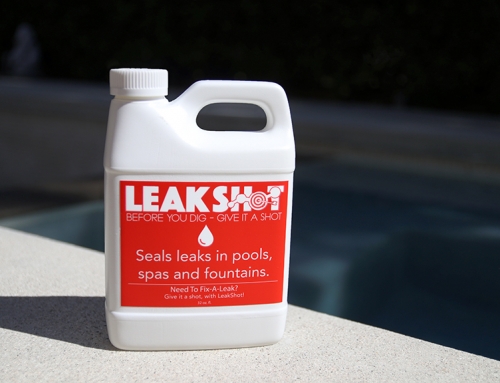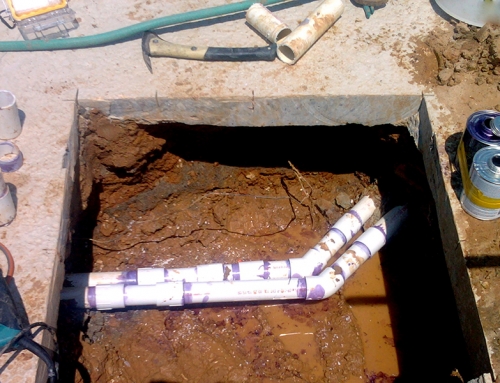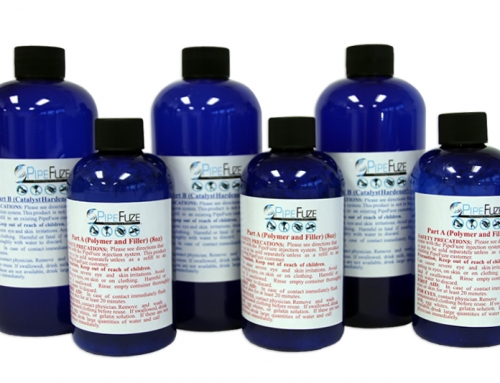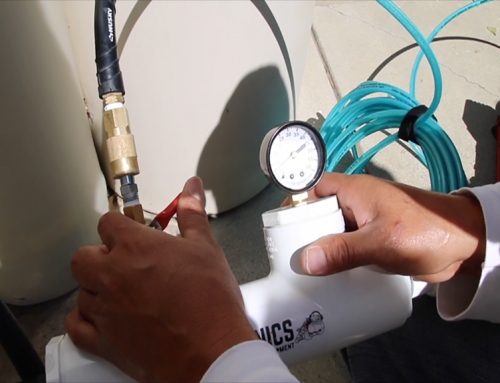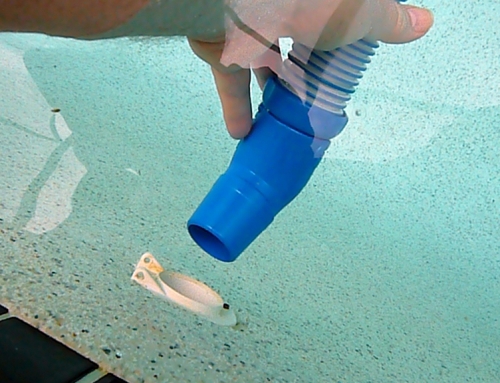With a simple pressure drop test, it’s easy to know that your return lines are leaking, even with multiple returns. We put rubber plugs into the returns, one with a small hole in it and we see that hole pulling the dye inward. This tells us that the lines are leaking, but we don’t know where.
A proper leak detection will let a customer know with pinpoint precision, where the leak is and what needs to be fixed, but PipeFuze offers an alternative to breaking concrete to fix leaks that aren’t detrimental to the system.
By applying just 10-12 pounds of pressure, using water, we can gauge the drop of pressure in the line being caused by the leak. Water and ir compress at different volumes, so we always perform a pressure drop test using water. A 5lb or less drop tells us that it’s the size and type of leak that PipeFuze can seal. If pressure drops from 12 pounds to zero in a few seconds, it’s likely there is a complete separation or a full radius break in the pipe and that means digging to make repairs; but 5lbs or less makes your buried pipe a contender for repair using PipeFuze.
We’re often asked how the fluids are administered when there are 3 returns but the customer doesn’t know where in the line the leak is. Some people question making a giant manifold with multiple hoses or configuring something that will distribute the fluids back through each return; it doesn’t need to be that complicated. Isolate the lines by cutting at the equipment and injecting fluids independently through each return, back toward the equipment.
“When I perform a PipeFuze job on multiple returns, this is what I do,” shares Gavin Stables, a pool contractor in Florida. “I mark my level in the bucket and I inject through the farthest return, running back toward the equipment on the line for about an hour. I move the injection rig to the next return fitting, plug the first and inject from the second, repeating the process on each line. Before injecting on the second return, I refill the bucket to the original starting line and add another half bottle of PipeFuze Part A to bolster the solution, making sure I’ve still got a high concentration of Part A in the line. It is very typical that by the last return I do, the water has stopped dropping in the bucket, this tells me I’ve stopped the leak. I then run Part B through each return for a half hour the same way. This ensures I’ve put the product past every conceivable area of the pipe, sealing any and all leaks in the line. It works.”
Some contractors have explained to us that they’ve created an octopus of hoses to each return and injected all lines at the same time using 2 or 3 bottles of Part A to ensure coverage, and that’s fine too, but it isn’t necessary to concoct a device to do this, you can inject individually through each return back toward the equipment and cycle the fluids through all the lines, one at a time and still guarantee equal distribution through the plumbing.
Learn more about PipeFuze and the solution for underground pipe repair without digging at https://pipefuze.com or call 818-436-2953 for more information.

